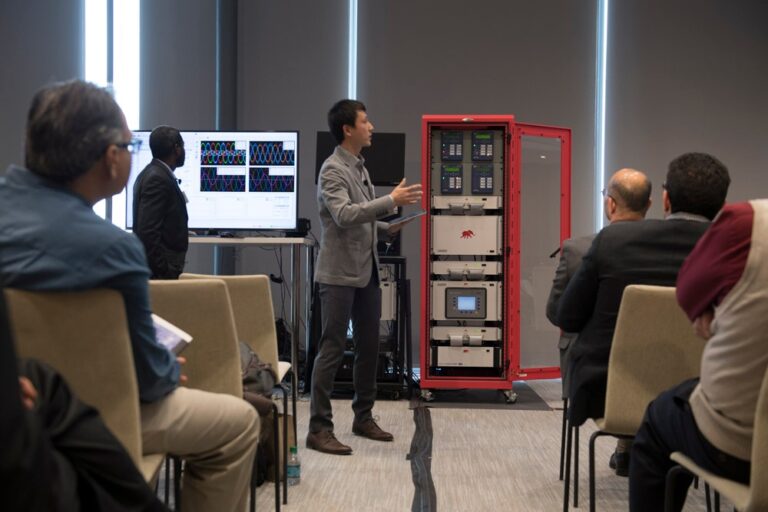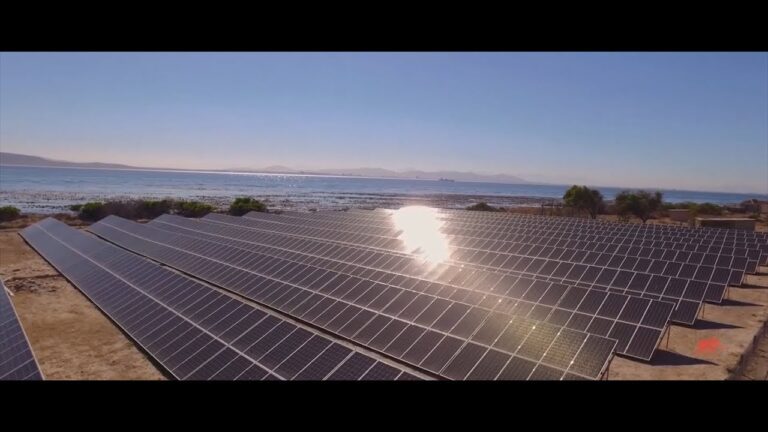Introduction
Modern grids, including emerging microgrids and advanced shipboard power systems, are increasingly about communication and control networks. Through these networks, countless smart power electronics devices and systems – such as solar inverters, wind turbine inverters, battery storage systems, microgrid control systems, etc. – communicate among themselves.
To make things interesting, all these smart devices also speak many different languages, i.e. communication protocols, such as Modbus, IEC 61850, and DNP3, to name just a few. Therefore, a well-integrated communication toolbox is a must-have for thorough Controller Hardware in the Loop (HIL) testing of modern intelligent electron devices (IEDs).
Read on for 3 key reasons why full support for communication protocols is becoming a must in state-of-the-art HIL testing.
1. Test protection system configurations

To test the protection devices effectively a Communication Toolbox is needed that fully supports the IEC 61850 Substation Configuration Language (SCL). Such a toolbox brings protection testing to a whole new level because it allows the inclusion of an unlimited number of protection devices, modeled in the real-time simulator, through their configuration files (e.g. .ICD, .SSD, and .SCD files) rather than through interfacing physical hardware to the simulation.
The benefits are game-changing and include real-time HIL simulation of the system with a 1 µs time step that includes inverters and other distributed energy resources (DERs), automated testing of protective configurations, executable specification of protection device requirements, and more.
2. Test holistically

Modern smart grid-connected devices are required to communicate among themselves and with, for example, the Distribution Management System (DMS) via Supervisory Control and Data Acquisition (SCADA) systems. That is why communication protocols are becoming increasingly important in HIL testing.
Integrating communication protocols into a HIL real-time simulation enables realistic testing of the device under test (DUT) in its interactions with other grid-connected devices – be they real or emulated.
In other words, a combination of HIL and communication protocols is the winning formula for holistic testing that ensures that a DUT will work as expected both autonomously, as well as a part of a larger network of devices.
3. Test with multiple protocols

Consider an example of a microgrid system where SCADA speaks MODBUS/TCP, relays speak IEC 61850, electric vehicle (EV) engine control units (ECU) speak CAN, and a microgrid control system speaks DNP3… in traditional testing, it is very difficult to integrate all of these in the same simulation.
Exactly for this reason, what becomes a must is a Communication Toolbox that is designed to be a universal communication tool, that is fully configurable and that is integrated with the Schematic Editor in the standard drag-and-drop manner. One has to have means to ensure that the communication will work as expected under all operating conditions.
Just imagine a situation in which an inverter controller under test communicates with a microgrid controller via MODBUS in the slave mode, and at the same time communicates with two protection relays using two separate IEC 61850 channels. Similarly, a battery storage controller of an EV may communicate with the rest of the EV using CAN and with the charging station using the manufacturer’s proprietary TCP/IP-based protocol.
But that is not all. To be really useful a Communication Toolbox is needed that has a Python API and can be easily programmed to automate test runs as well as to convert messages between different protocols as the test scenarios may require. In other words, to become a Babel Fish for Smart Grid communication languages.
Credits
Author | Aleksandar Kavgic
Visuals | Typhoon HIL
Editor | Debora Santo


